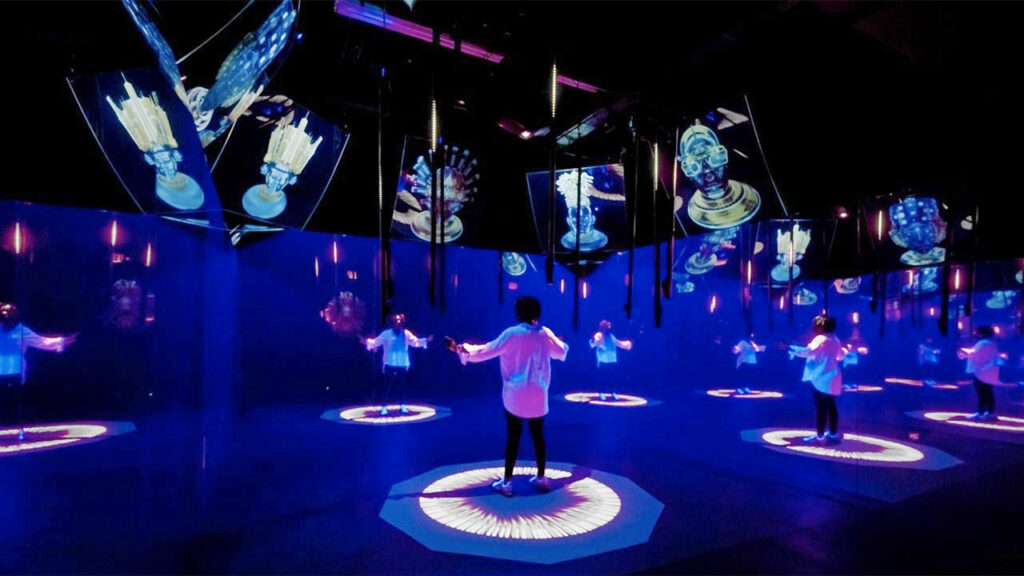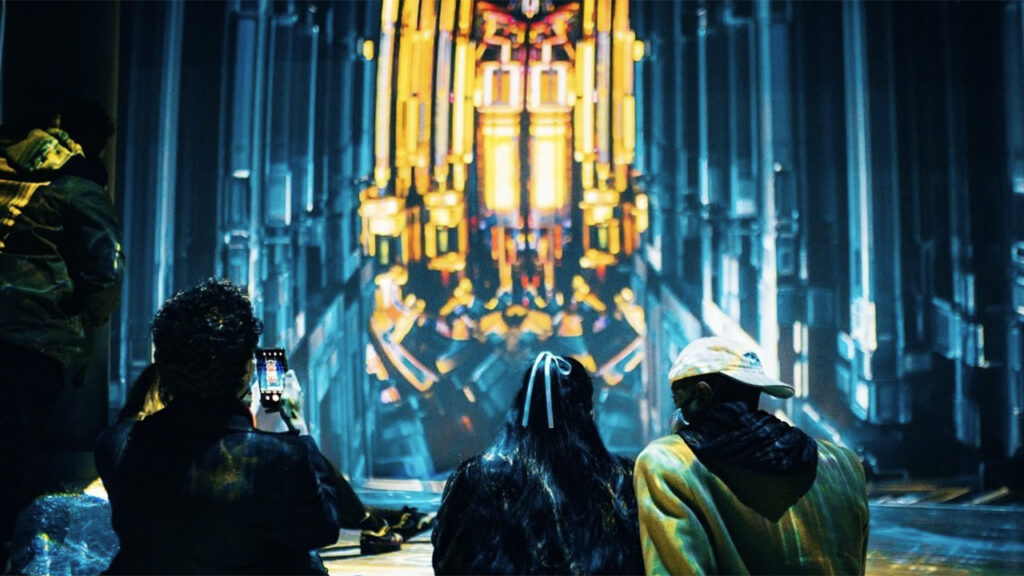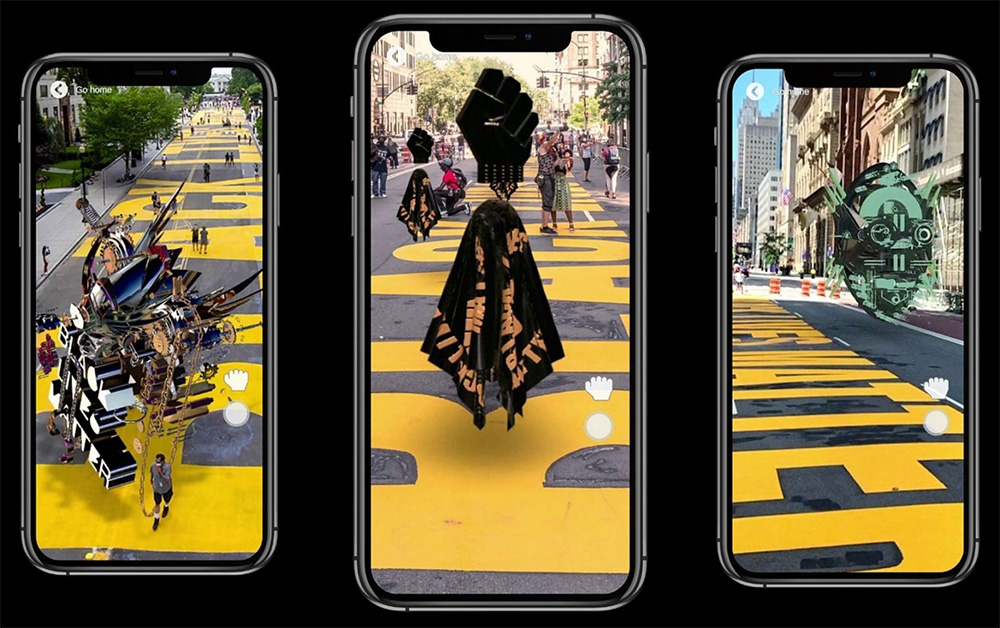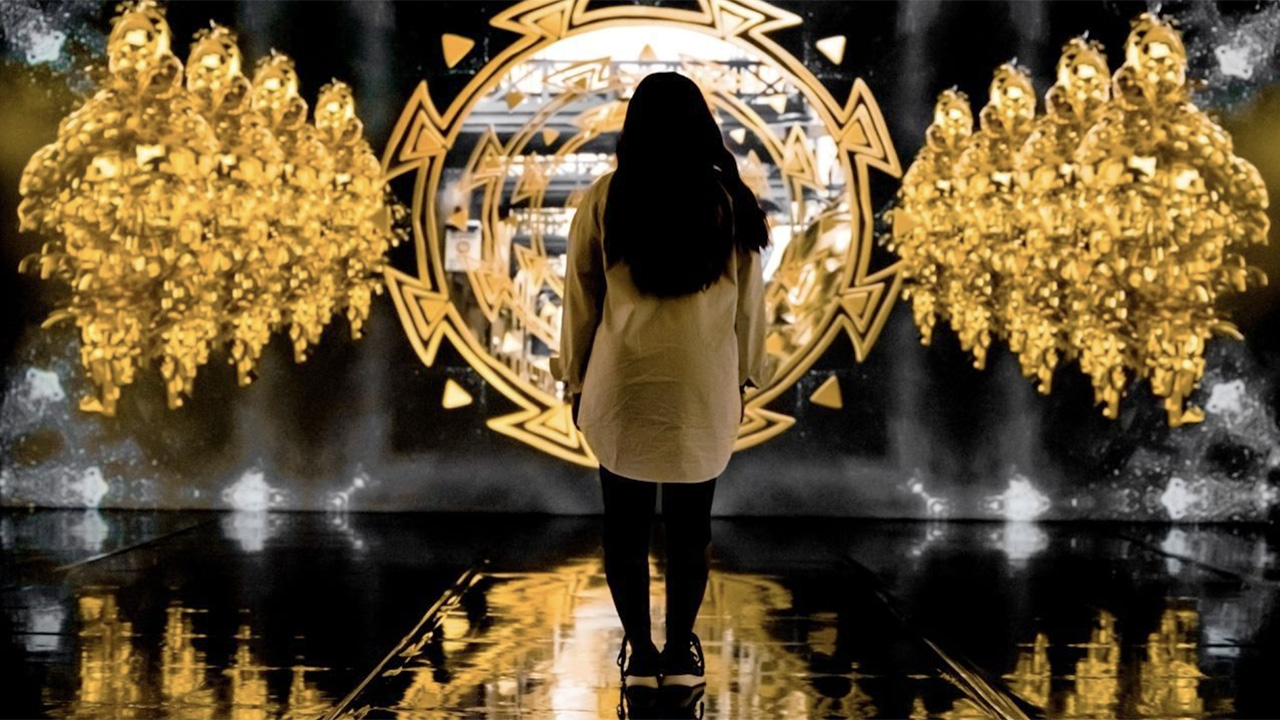In an age defined by the increased availability of spectacle, cultural exhibition producers are being called upon to up the ante when it comes to technological ambition — audiences want to be wowed, and ARTECHOUSE, a new media incubator for artists pushing the boundaries of visitor interaction, has fast become a stand-out leader in that arena. Its titular portmanteau speaks to its relationship with limitless experiential marvel, and with locations in D.C., New York’s Chelsea Market, and Miami, it’s just getting started.
On May 17, ARTECHOUSE Miami launched Aṣẹ: Afro Frequencies, a multi-sensory immersive and interactive exhibition featuring the work of Vince Fraser, a London-based visual artist and designer. The idea of aṣẹ, the West African concept relating to humanity’s power to produce change, celebrates the Black experience while underscoring ARTECHOUSE’s own mission — to expand the limits of the museum model through innovation and curiosity. Jing Culture & Commerce caught up with Lena Galperina, Visitor Experience Director at ARTECHOUSE Miami, to learn more about the exhibition, the brand’s larger project, and how an experiential offering weathered 2020’s lockdowns.
How does ARTECHOUSE select artists to partner with?
We are showcasing a new medium of art that pushes the boundaries in how we use technology, so we love working with creatives who are doing just that. We have three different ways of doing it — ARTECHOUSE Original, ARTECHOUSE Presents, and ARTECHOUSE Produces. Sometimes we choose artists who are already on the cutting edge of this kind of interactive, boundary-pushing technology, people who are creative coders or fractal artists. But when we choose artists like Vince Fraser who are not necessarily doing experiential artworks themselves, we really want to bring them into this kind of experience and be a platform for diversity.


Aṣẹ: Afro Frequencies at ARTECHOUSE Miami (above) and Geometric Properties at ARTECHOUSE New York City (below). Images: ARTECHOUSE
With ARTECHOUSE’s centering of in-person experiences, how did COVID impact its offering?
We had to close for a little bit due to COVID and we had to adjust our operations to adhere to CDC guidelines. While we did increase our cleaning, sanitation stations, and signage and rules for wearing masks, we’ve actually always limited the amount of people in the space because it’s an immersive experience, so we were never operating at full capacity. For us, the new capacity with COVID was only a slight change.
How else did the organization conduct audience outreach over the past year?
We started a new program called Artechours, which is an Instagram Live [series] I host where we talk to artists. We also added a lot of new activations to the ARTECHOUSE app so people could experience art in their homes or on walks, which helped us expand our mission. We’re still putting energy in that direction to not just build relationships with the cities where we’re located, but with the global audience as much as we can through digital means.

The ARTECHOUSE app, containing XR features that can be unlocked on-site, was recently updated with Vince Fraser’s AR works, which users can activate anywhere. Image: ARTECHOUSE
Can you give us a layman’s run-down on the tech employed in ARTECHOUSE’s immersive experiences?
In a poetic way, one of the mediums we use is light. That manifests itself through state-of-the-art projection mapping where visuals can surround all the walls. In addition, we’re using different types of screens, like LED screens, strips, and panels.
Sensors are a big part of this, since this is an interactive experience; this includes 3D motion cameras. We use Connex cameras, which use infrared technology to see what is in front of it, and we’re able to take that data and convert it into an interaction. Through software and coding, we can take what the installation sees through these sensors and create experience. There’s also the extended reality technology, which uses the technology of the phone. There’s a conversation between the physical world and lighting to create animations, make sure they aren’t just static.
How does ARTECHOUSE’s business model work?
We are an independent innovative art space and we are self-funded through the support of our visitors. The heart of our process is very much collaborative — whenever we invite artists to work with us, we have a creative team with different expertise. It always takes a team to realize these installations, whether it’s our creative team or a collaboration with the artist’s studio to bring their vision to life. We move fast; we typically show 3 to 5 different experiences per location per year. Even with quarantine, we were able to put on nine total experiences.
What are some key visitor insights you’ve picked up on since ARTECHOUSE emerged from lockdown?
Visitors have told us that they are very happy to be in a place of art, especially during the early days when we were just coming out of quarantine. And we are lucky to have a very diverse audience: not only do we get art lovers, but also people who typically don’t go to art experiences. We have people who come from tech or science backgrounds as well, curious to see their industry in a new light. I would add that many visitors expressed that they knew that art is something they enjoy, but that first experience out of quarantine was more emotional and powerful for them than they realized it would be.



